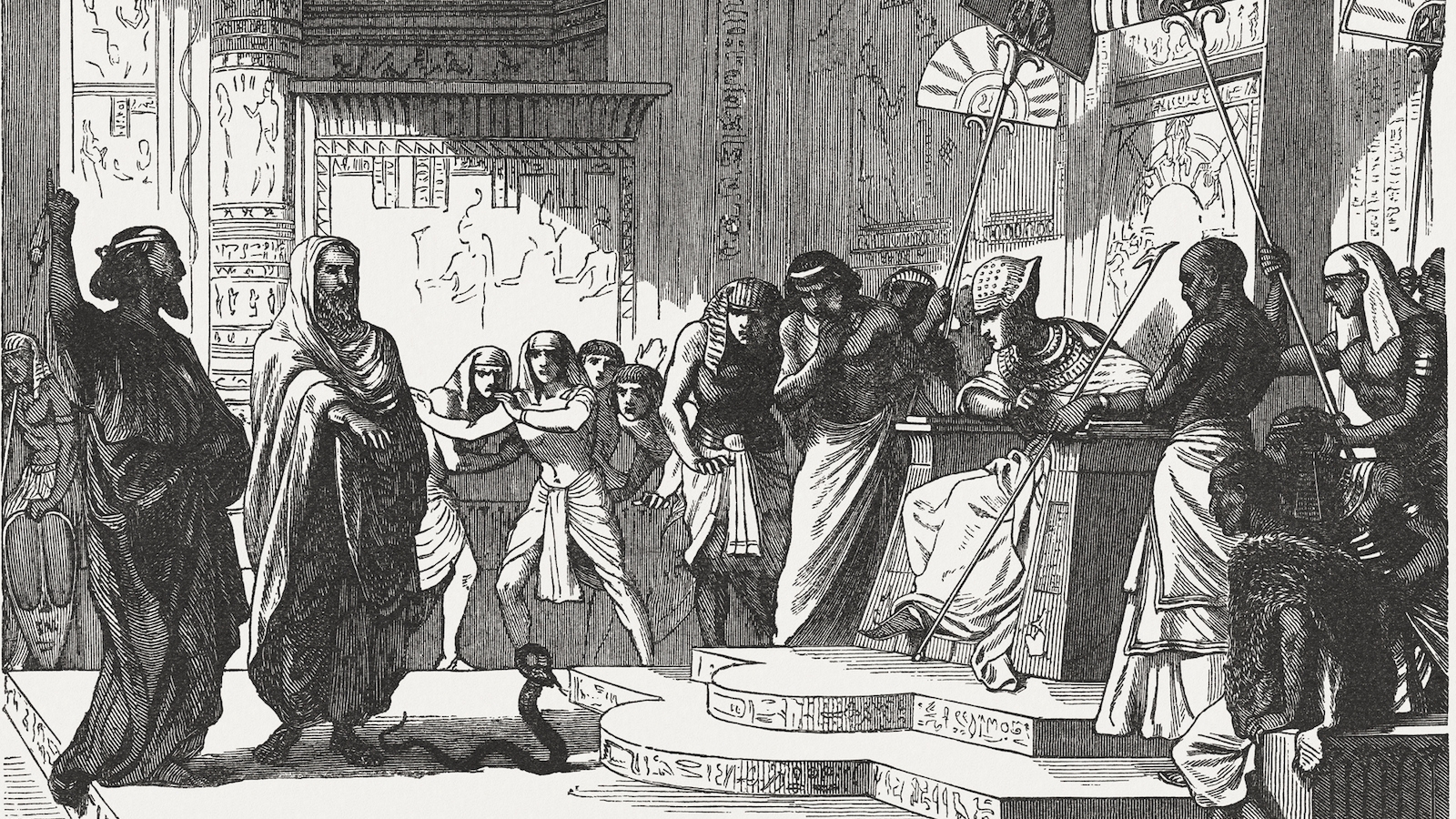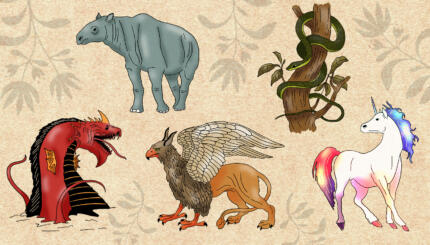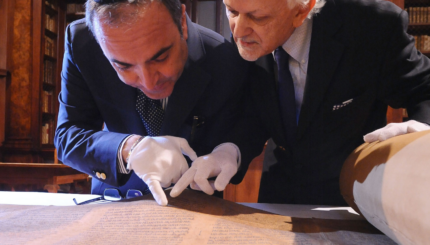Commentary on Parashat Vaera, Exodus 6:2-9:35
When God appoints Moses and Aaron to lead the Jews’ exodus from Egypt, the brothers are charged with a dual responsibility. On one hand, they must confront and negotiate with Pharaoh to secure the release of their people. On the other, Moses and Aaron must also convince the Jews to accept them as leaders and reliable bearers of God’s word.
Mixed Messages
Each of these processes began in Parashat Shemot (which we read last week), and continues in this week’s portion, Vaera. Rather than rely only on oration or logical persuasion to accomplish their goals, Moses and Aaron perform miracles as well. An interesting contrast between one of the miracles performed in last week’s portion and one in this week’s sheds light on the very different nature of the message being transmitted to the Jews from that being communicated to their Egyptian captors.
In Parashat Shemot, God appears to Moses and appoints him as the individual to lead the Jews out of slavery. In a lengthy dialogue, Moses protests that he is not suited for the task, while God maintains that Moses is destined for leadership. Among his many concerns, Moses expresses doubt as to whether the Jews will believe that God has appeared to him and appointed him to lead them out of Egypt. God responds by equipping Moses with several “signs” (miracles) to convince the Jews of his divine approval.
Different Images of Moses & The Snake
In one of these miracles, Moses is commanded to throw down his staff, and when he does so, it turns into a snake (nachash). God then tells Moses to grab the snake by the tail, and when he does so the snake reverts back into a staff. This miracle, along with two others, is used to convince the Jews that Moses is the legitimate messenger of God.
With your help, My Jewish Learning can provide endless opportunities for learning, connection and discovery.
In Parashat Vaera, a similar miracle takes place. Moses and Aaron confront Pharaoh, bearing God’s command that the Jews be set free. Not surprisingly, their request meets with cynicism and rejection. However, to demonstrate that they have, in fact, been sent by God, Aaron is commanded to throw down his staff, which turns into a serpent (tanin).
Unimpressed by this display, Pharaoh calls on his magicians, who also turn their staffs into serpents. However, Aaron’s staff devours those of the Egyptians. (The medieval commentator Rashi notes that the verse says that the staff of Aaron devours the staffs of the Egyptians, rather than saying that the serpent of Aaron devoured the serpent of the Egyptians. According to Rashi, this is a “miracle within a miracle,” because somehow the devouring took place after the respective serpents turned back into staffs.)
Thus, we see that similar miracles are used to convince the Jews and the Egyptians. Yet, the miracles are not identical. For the Jews, Moses’ staff turns into a snake (nachash), while for the Egyptians, Aaron’s staff turns into a serpent (tanin). What does this difference signify?
Varying Interpretations
For an answer, we might look to another place in the Torah where we find snakes and serpents. In Parshat Bereshit, at the very beginning of Genesis, there are two different accounts of creation. The first chapter of Genesis provides a “macro” view of creation.
Beginning from nothingness, the narrative follows the process of God creating light and darkness; the separating of the “upper waters” from the “lower waters;” forming the land, celestial bodies, and flora; and the creating of living creatures, culminating in man. Each step is initiated by God’s “intention,” and culminates with God’s “approval.”
The Account of The Fifth Day of Creation
In this account, on the fifth day of Creation, when God “decides” to create living creatures, we read:
And the Lord (Elo-him) created the great taninim (serpents), as well as every living creature that moves, which the waters brought forth abundantly…and every winged bird… (Genesis 1:21).
This verse begins with the creation of the tanin, exactly the symbol that Aaron’s staff became in the court of Pharaoh.
In the second chapter of Genesis, we read of creation from a different perspective. In this version, only relatively little attention is given to the creation of the physical and animal worlds. The major focus, rather, is on the creation of man and woman, their placement in the Garden of Eden, God’s commandments to them, and their eventual downfall at the hand of the nachash.
While the first account of creation is from a cosmic perspective, the second account is very much from an anthropocentric perspective. And thus, while God is, of course, behind every step of each account of Creation, God is portrayed differently in each version. In Genesis I, God is portrayed as the Master of the Universe, the cosmic orchestrator. By way of contrast, in Genesis II, God is portrayed in a more immanent, intimate light, as the parent of Creation in general, and of man and woman in particular.
How does the appearance of the nachash and the tanin in Parshat Bereshit relate to the use of the nachash and tanin in our parsha?
I believe that these symbols reflect the distinct messages that Moses and Aaron were communicating. For the Egyptians, who did not recognize God’s complete mastery and control over the world, Moses and Aaron utilize the imagery of Genesis I, where God’s cosmic rulership is demonstrated.
The Snake as Tanin
Moreover, because the Egyptian culture deified certain animals (see, for example, Rashi on Genesis 46:34), the symbol of the tanin, the first creature God created, effectively conveys God’s complete mastery over the world. Note that Aaron’s tanin, which might be called a “tanin of belief” devours the Egyptians’ “taninim of disbelief,” thus asserting the validity of the message that Moses and Aaron represent.
Yet while Moses and Aaron must “educate” the Egyptians about God’s existence and grandeur, they face a very different task with the Jewish people. The Jews, enslaved for more than 200 years, and strangers in a foreign land for even longer, have predictably been influenced by their surroundings and grown distant from God.
When Moses returns to Egypt to lead the Jewish people, he must do more than establish his own legitimacy. He must rekindle the people’s flame of belief and faith in God. Thus, one of the symbols that he presents to the people is that of the nachash, hearkening back to Genesis II and its portrayal of the intimate, parent-progeny relationship between God and man.
At first glance, however, it seems strange to resort to this symbol, because the nachash was blamed for causing the sin of Adam and Eve, and thus it created distance between man and God. Why, then, would Moses evoke this symbol?
Perhaps the answer is that, whereas the Torah does not detail how Aaron converted the tanin back into a staff, it explicitly states that God commanded Moses to grab the nachash by its tail, and then it would turn back into a staff (Exodus 4:4). Thus, Moses demonstrates mastery over the very creature that once brought distance between man and God. Moses’ message is that it is time for the Jews to re-enter into an intimate relationship with God.
Recognizing the Meaning of the Exodus
This analysis of the dual messages borne by Moses and Aaron help us more clearly understand not only the details of the miracles they performed, but also the very purpose behind the entire Exodus. The Jews were not freed from Egypt simply to restore their human rights. Rather, they were liberated with the purpose of fulfilling God’s word–to enter into a close relationship, or covenant, with God.
Similarly, the punishments inflicted on Egypt were not due only as retribution for their maltreatment of the Jews. Rather, the process of the 10 plagues and the splitting of the Red Sea was to establish, beyond the shadow of a doubt, God’s dominion over the entire world.
Reprinted with permission from the UJA-Federation of New York, which cares for those in need, strengthens Jewish peoplehood and fosters Jewish renaissance.
parsha
Pronounced: PAR-sha or par-SHAH, Origin: Hebrew, portion, usually referring to the weekly Torah portion.
Torah
Pronunced: TORE-uh, Origin: Hebrew, the Five Books of Moses.



